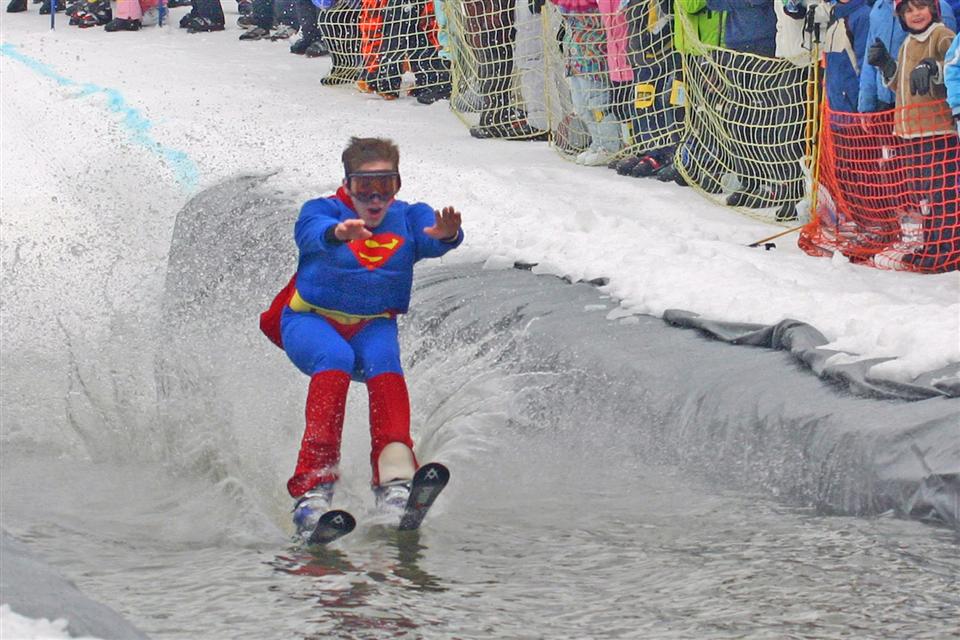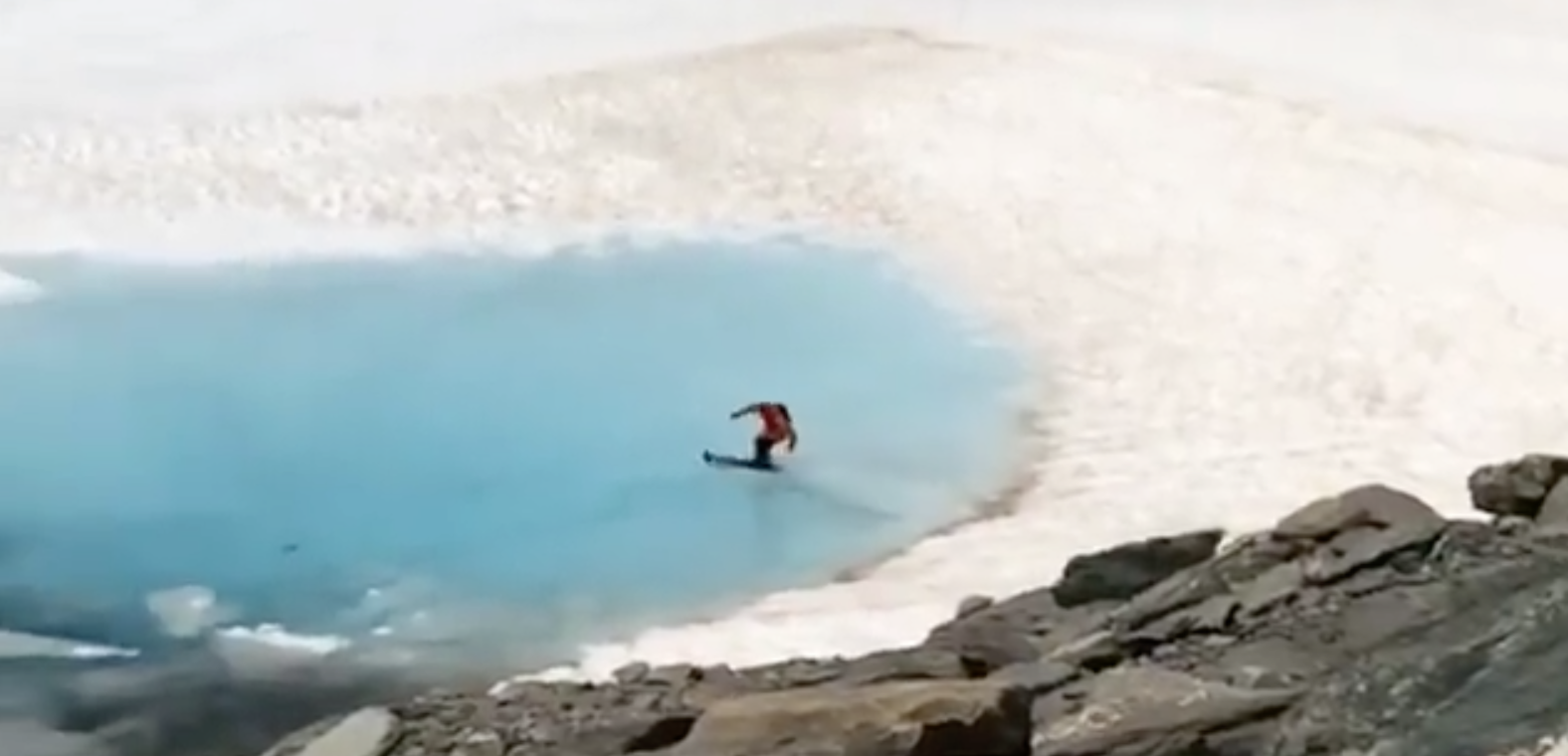How to ski across water


I came across my first achievable water splash last winter in Italy, on an Easter trip with the family. It doesn’t matter how neatly you turn or how steep you ski, if you want to impress the yoof you either have to do tricks (which, it turns out, are beyond my return to work recovery time) or ski through water. So I’ll try to float.
After aiming, shutting my eyes, and arriving at the other side I officially became A Good Skier according to my eight-year-old daughter.

Reason enough to give it a go. Collective enthusiasm for skating on less than thin ice has been the finale of many a resort’s season ending party for decades. Anyone can join in, though a willingness to dress up as a turkey and frontflip at full pelt into the slushy mess is seen as an entry guarantor in most places.
The ingredients seem to be a meltwater pool of extreme frigidity and sufficient length to keep most participants from reaching the end, and a run up sufficiently unbalancing to test most happy chancers.
Almost every large resort has some sort of nonsense going on:Big Sky in Montana has it’s annual Pond Skim comp (see video below), Whistler has a blowout linked to the Telus Festival in late March (which is an excellent collection of everything from foodie stuff to Superpipe competitions), and Livigno takes going over water a step further by making riders clear a river during the Burn River Jump. Come the end of February, the TTR snowboard tour arrives in town and fires riders over the local river. You have to be quite good to compete, and you really don’t want to miss your landing what with Alpine rivers not being benign, meandering or deep…
One of the longest running Slush Cups, as official skiing-over-water contests are known (in North America), is in Nova Scotia. We’d be impressed if you made it there for a family holiday; to date even the intrepid Fall Line team hasn’t explored that region, but YouTube fills in the gaps. It’s worth studying the older videos from before skis fattened up, when the opportunity for a faceplant was a lot higher.
Having spent a few days studying the hydrodynamics of skis from the safety of the side of a slush cup, and then towing willing volunteers into the NEC lake behind a motorcycle, it seems that the surefire way to get across is to use the fattest skis possible.

To set some sort of context: standard rental skis tend to be piste-biased and between 70-80mm underfoot. Freeride and off-piste skis tend to be about 10-20mm wider. After sending friends across several times, it became clear that anyone with sub-85mm skis struggled to stay balanced, and anyone with 100mm skis could essentially ski on water like on snow. Wide skis can carve on water, and skiers with skill can spin and ski out switch. Snowboarding across water is cheating; too easy.
In terms of body position, don’t lean back – just keep your head up and aim for your exit. It’s worth scoping the pool first just to make sure there isn’t a step in the ice on the way out…
Practice tip: find some slush and scoot through it.